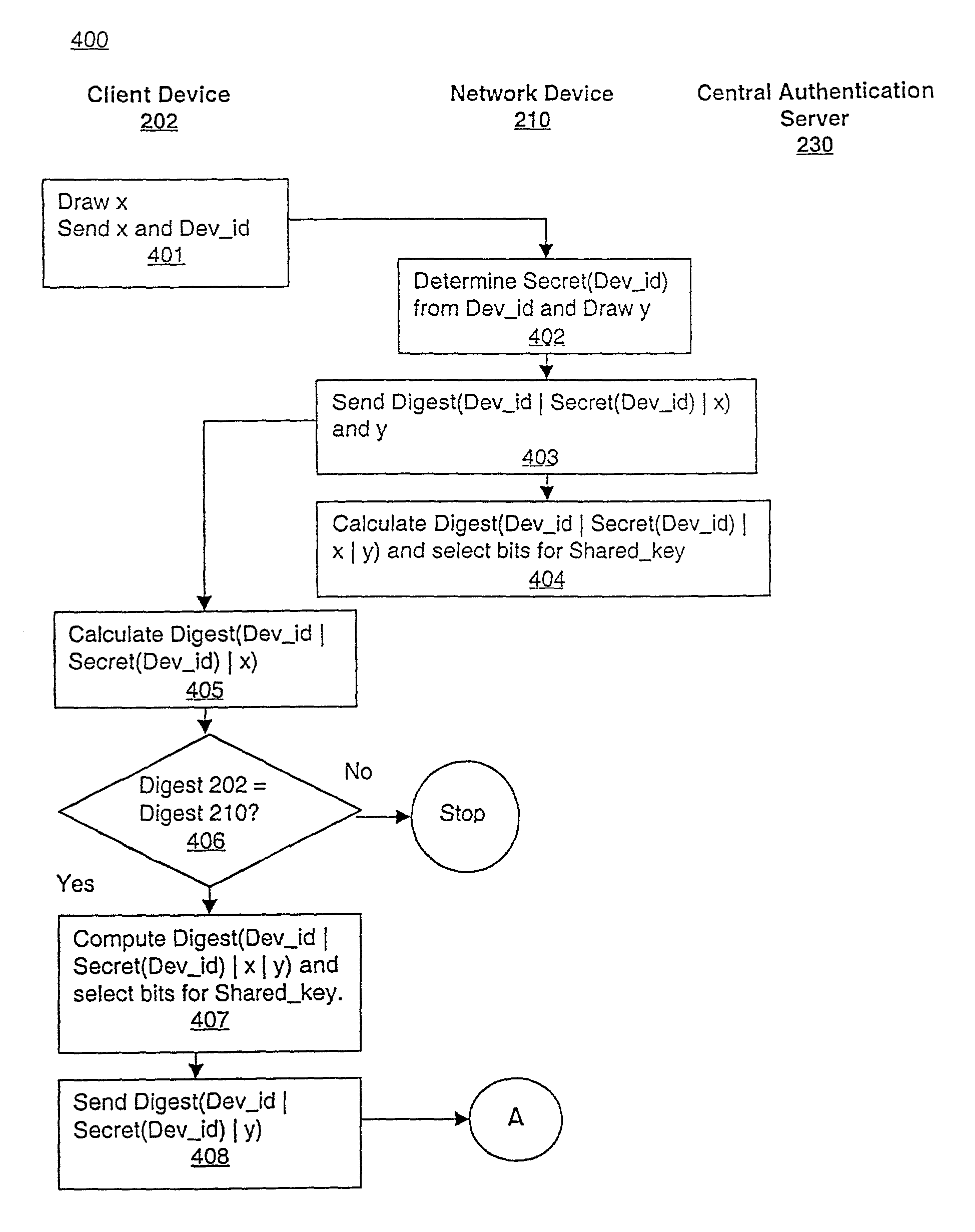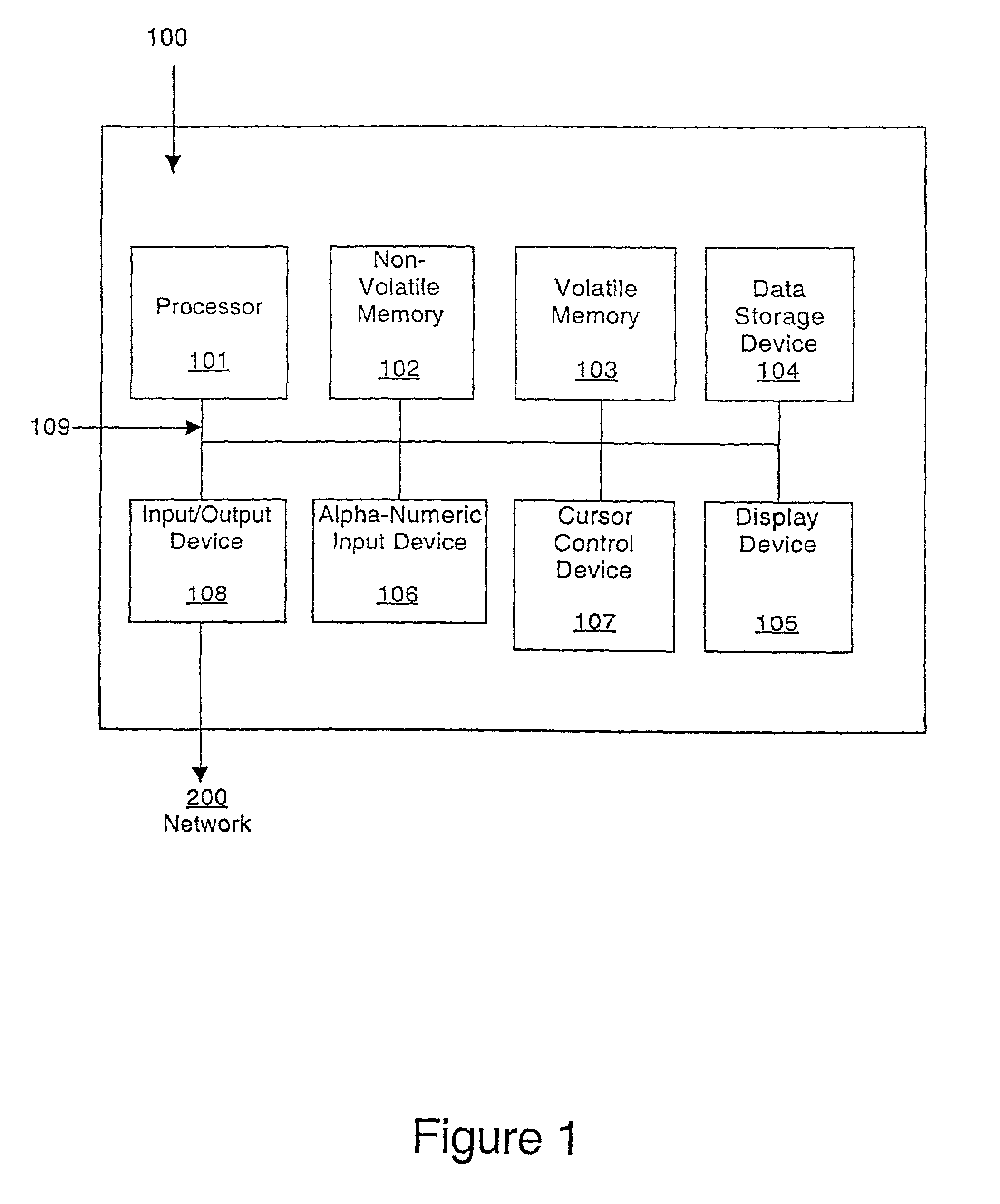Scheme for device and user authentication with key distribution in a wireless network
a wireless network and key distribution technology, applied in the field of computer networks, can solve the problems of increasing increasing the difficulty of synchronizing each individual copy of the user name/password database, and increasing the difficulty of creating and managing user names and passwords stored on them, so as to reduce the computational burden of wireless devices and/or access points, the effect of reducing the computational burden
- Summary
- Abstract
- Description
- Claims
- Application Information
AI Technical Summary
Benefits of technology
Problems solved by technology
Method used
Image
Examples
Embodiment Construction
[0036]Reference will be made in detail to the preferred embodiments of the present invention, examples of which are illustrated in the accompanying drawings. While the invention will be described in conjunction with the preferred embodiments, it is understood that they are not intended to limit the invention to these embodiments. Contrarily, the invention is intended to cover alternatives, modifications, and equivalents, which may be included within the spirit and breadth of the invention as defined by the appended claims. Additionally, in the following description, for purposes of explanation, numerous specific details are set forth in order to provide a thorough understanding of the present invention. It will be obvious, however, to one skilled in the art that the present invention may be practiced without these specific details. In other instances, well-known structures and devices are shown in block diagram form in order to avoid obscuring the present invention. Additionally, in...
PUM
 Login to View More
Login to View More Abstract
Description
Claims
Application Information
 Login to View More
Login to View More - R&D
- Intellectual Property
- Life Sciences
- Materials
- Tech Scout
- Unparalleled Data Quality
- Higher Quality Content
- 60% Fewer Hallucinations
Browse by: Latest US Patents, China's latest patents, Technical Efficacy Thesaurus, Application Domain, Technology Topic, Popular Technical Reports.
© 2025 PatSnap. All rights reserved.Legal|Privacy policy|Modern Slavery Act Transparency Statement|Sitemap|About US| Contact US: help@patsnap.com



